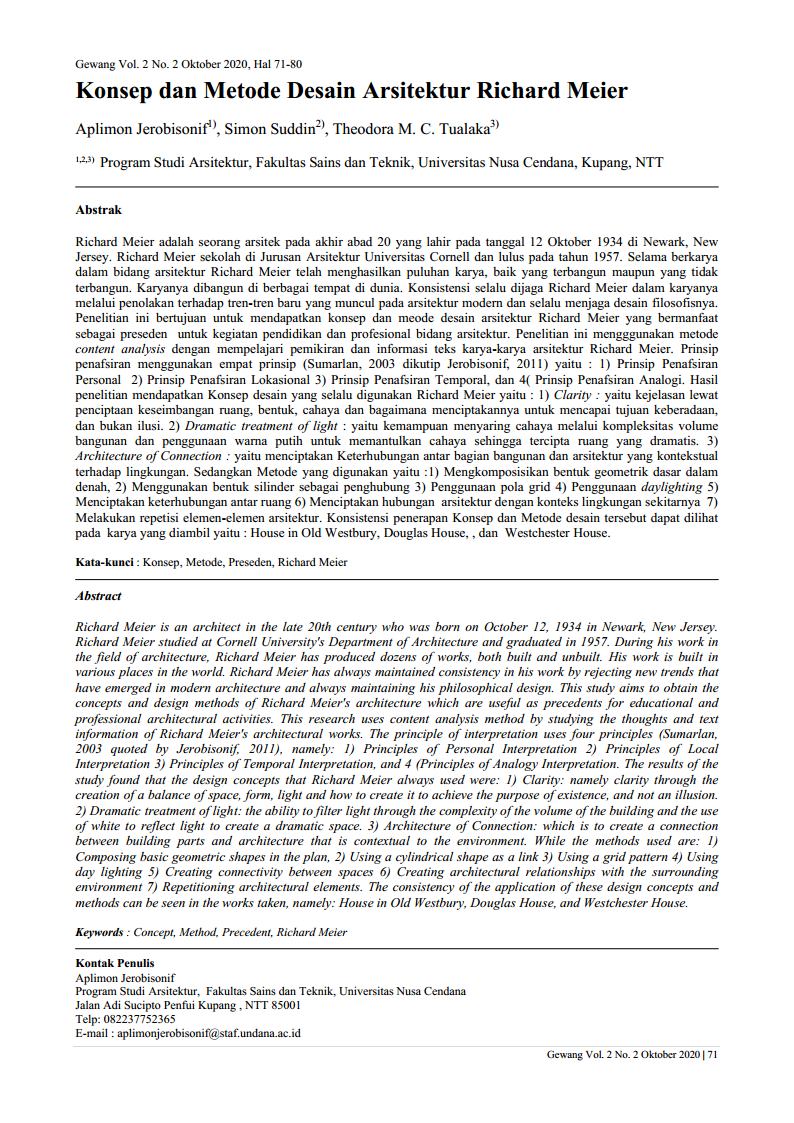Konsep dan Metode Desain Arsitektur Richard Meier
Main Article Content
Abstract
Richard Meier is an architect in the late 20th century who was born on October 12, 1934 in Newark, New Jersey. Richard Meier studied at Cornell University's Department of Architecture and graduated in 1957. During his work in the field of architecture, Richard Meier has produced dozens of works, both built and unbuilt. His work is built in various places in the world. Richard Meier has always maintained consistency in his work by rejecting new trends that have emerged in modern architecture and always maintaining his philosophical design. This study aims to obtain the concepts and design methods of Richard Meier's architecture which are useful as precedents for educational and professional architectural activities. This research uses content analysis method by studying the thoughts and text information of Richard Meier's architectural works. The principle of interpretation uses four principles (Sumarlan, 2003 quoted by Jerobisonif, 2011), namely: 1) Principles of Personal Interpretation 2) Principles of Local Interpretation 3) Principles of Temporal Interpretation, and 4 (Principles of Analogy Interpretation. The results of the study found that the design concepts that Richard Meier always used were: 1) Clarity: namely clarity through the creation of a balance of space, form, light and how to create it to achieve the purpose of existence, and not an illusion. 2) Dramatic treatment of light: the ability to filter light through the complexity of the volume of the building and the use of white to reflect light to create a dramatic space. 3) Architecture of Connection: which is to create a connection between building parts and architecture that is contextual to the environment. While the methods used are: 1) Composing basic geometric shapes in the plan, 2) Using a cylindrical shape as a link 3) Using a grid pattern 4) Using day lighting 5) Creating connectivity between spaces 6) Creating architectural relationships with the surrounding environment 7) Repetitioning architectural elements. The consistency of the application of these design concepts and methods can be seen in the works taken, namely: House in Old Westbury, Douglas House, and Westchester House.
Downloads
Article Details
This license enables reusers to distribute, remix, adapt, and build upon the material in any medium or format, so long as attribution is given to the creator. The license allows for commercial use

